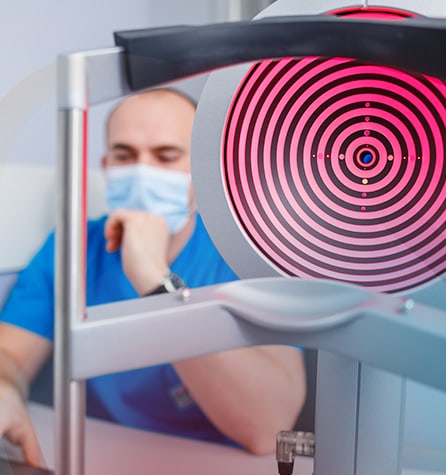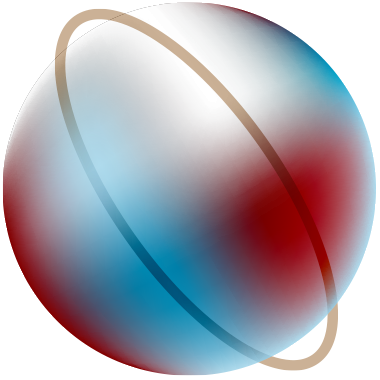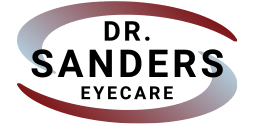Preserve Healthy Vision with In-Depth Evaluations
Many people think of blurry sight when they think of vision problems. Yet, common eye diseases can develop without symptoms. Rather than something you can feel or see, detecting eye conditions and diseases requires testing to look in-depth at eye health.
Monitoring eye health provides details about your individual vision, helping us understand how your needs evolve over time. Regular eye exams allow us to provide appropriate care when you need it—including recommending prevention methods or implementing treatment to save your sight.
How Can Eye Diseases Affect Vision?
Eye diseases can affect sight and vision, interfering with the eye’s ability to gather or process visual information. Depending on the tissue of the eye affected, patients may experience various symptoms, ranging from mild to severe.
With personalized care, we can provide services tailored to your needs, whether your focus is preserving sight or enhancing the quality and comfort of your vision.


What Is Glaucoma?
Glaucoma is a group of progressive eye diseases. Many people don’t realize they have glaucoma, as it can significantly damage vision before you experience symptoms. The disease damages the optic nerve, a nerve cluster that communicates visual information to the brain.
Decreased peripheral or side vision is often the first noticeable change. However, the optic nerve can be severely impaired before most patients notice vision loss.
Regular glaucoma testing allows us to monitor eye health and act when we notice early signs.
Testing for Glaucoma
Evaluating intraocular pressure (IOP) is a common testing method.
IOP is a measurement of eye pressure related to fluid buildup. Eye fluid delivers nutrients to inner eye tissue but needs to drain to remove waste. When fluid can’t drain properly, IOP increases—like filling a balloon with too much water and pushing on the outer walls (including the optic nerve).
We use tonometry to measure IOP, calculating the eye’s resistance to force. Contact tonometry uses a tool to gently tap the eye’s surface, while non-contact tonometry uses a puff of air. The test is quick with minimal discomfort.
Detecting Eye Diseases
Comprehensive eye exams include many necessary tests for evaluating the overall health of your vision. These tests act as a crucial starting point for understanding your unique eye care needs, including detecting risks for eye diseases. Depending on your needs, we may recommend additional testing to gain insight into your visual health.
Understanding your eye health in-depth allows us to stay up-to-date with your needs now and help us predict your needs in the future.
Retinal Imaging
Retinal imaging captures high-resolution, detailed images of the back of the eye. Every part of the eye plays a crucial role in clear, healthy vision, but tissues at the back of the eye—including the retina and optic nerve—gather, process, and communicate visual information.
Imaging technology allows us to see fine details undetectable with the unaided eye. Evaluating the retina, optic nerve, and blood vessels in-depth helps us detect early signs of eye disease, including glaucoma, diabetic retinopathy, and macular degeneration.
Visual Field Exam
Perimetry (a visual field exam) assesses peripheral vision—what you can see out of the sides or corner of your eye. Peripheral vision loss can be an early sign of eye disease, including glaucoma. During the test, patients look straight ahead and identify objects or flashes of light appearing in their peripheral vision.
Thorough perimetry evaluations allow us to understand your individual visual abilities and how your sight changes over time.
Managing Eye Disease
Cataracts
A cataract is a clouding of the eye’s lens. Proteins in the lens break down and clump together, blocking light and preventing the lens from focusing. Blurred vision from early stage cataracts can be sharpened with contact lenses or glasses. As vision decreases over time, cataract surgery may be recommended to restore vision quality.
Cataract surgery replaces the eye’s cloudy lens with an artificial lens. Removing the natural lens eliminates the chance of cataracts recurring.
Diabetic Retinopathy
Diabetic retinopathy is a complication of diabetes damaging blood cells in the retina. The abnormal blood vessels impact retina function, leaking fluid or blocking blood flow. People may experience few changes in the early stages, such as seeing spots or floaters and blurry vision. Over time, it can lead to blindness if untreated.
Regular diabetic eye exams are crucial for managing changing eye health and implementing appropriate treatment—from medications to eye surgery—as soon as possible.
Dry Eye Disease
Dry eye disease causes chronic, sometimes fluctuating symptoms. People with dry eye can experience burning, scratchy, red eyes, blurred vision, and frequent eye infections. In addition to feeling dry, patients can experience watery eyes as the tears try to compensate for quality with quantity. Treatment for dry eye focuses on restoring tear quality, which can impact moisture retention.
Visit our dry eye page to learn more about how we can optimize relief by personalizing treatment.
Macular Degeneration
Macular degeneration—also referred to as age-related macular degeneration—is a disease affecting the macula (central part of the retina). The macula helps detect color and fine details. When the macula deteriorates, vision quality decreases, but peripheral (side) vision remains unaffected.
Treatment depends on whether the disease is in the early stage (dry) or late stage (wet). Dietary supplements may help slow progression to preserve vision in the dry stage. In the wet stage, anti-VEGF injections or photodynamic therapy (PDT) can help control the leaky blood vessels impairing vision.
Preserving Your Eye Health Is Our Priority
Eye diseases can impact your sight and quality of life. With regular eye exams, we get to know you and your eyes. We focus on personalized strategies and solutions that meaningfully impact the quality of your vision. Schedule an appointment at Dr. Sanders Eyecare today.
Request AppointmentVisit Our Location
We’re conveniently located across from My Dad’s Pizza and Knoll Avenue. Free parking is available in the lot steps from our front door. We look forward to seeing you at your next eye exam!

Our Address
- 4600 Buffalo Rd.
- Erie, PA 16510
Contact Information
- Phone: 814-899-6498
- Email: [email protected]
Hours of Operation
- Monday: 8:30 AM – 5:00 PM
- Tuesday: 8:30 AM – 5:00 PM
- Wednesday: 8:00 AM – 1:00 PM
- Thursday: 8:30 AM – 5:00 PM
- Friday: 8:30 AM – 5:00 PM
- Saturday: Closed
- Sunday: Closed
Closed for lunch from 12:30-1:30
Our Brands










